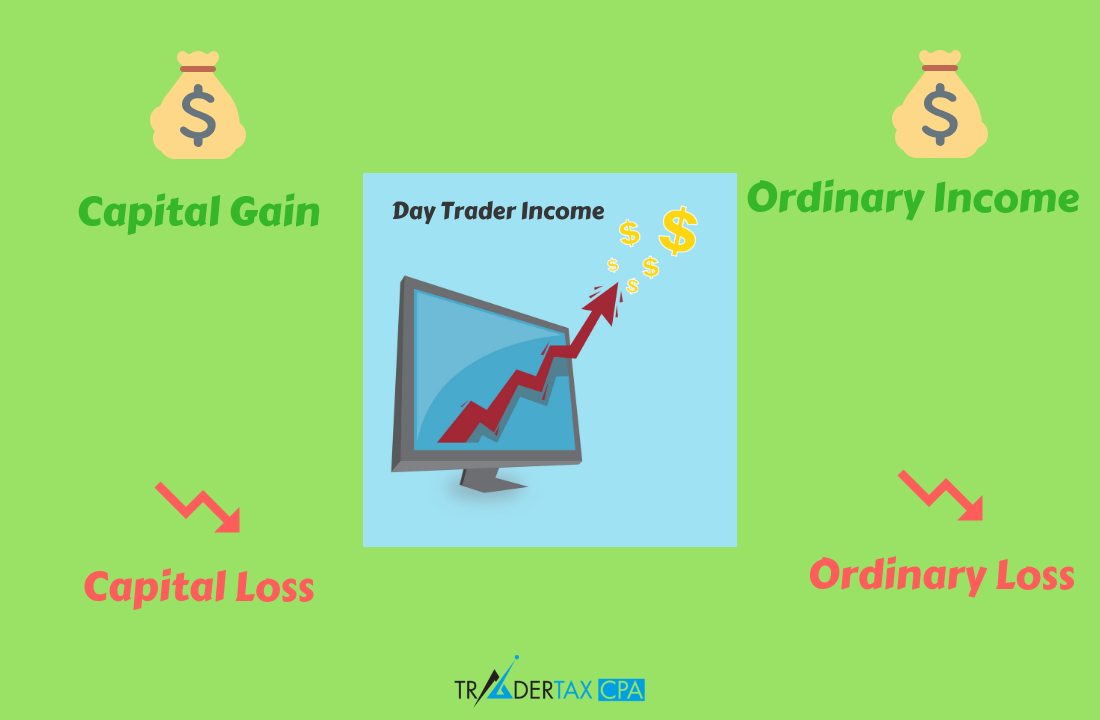But before we explore that let’s take a look at the difference between ordinary income/losses vs. capital gains/losses.
Ordinary Income. If a security is taxed as ordinary income, it is subject to your marginal tax rates. Your marginal tax rates are based on your filing status and income. For a security to be taxed as ordinary income the trader will have had to hold it for less than twelve months.

*The dollar figures in this tables refer to your taxable income, not your total income. Your taxable income is your income after certain deductions have been subtracted. You can find your taxable income on line 43 of your 1040 tax return form.
If you have an ordinary loss, it offsets any other income you may have dollar for dollar. For example, if you have a $15,000 ordinary loss, any other income you may have (W-2, spouses’ income, etc.) is decreased by $15,000. Ordinary losses are not subject to the $3,000 annual limit that is imposed on capital losses (read below).
If you do not have any other income sources, ordinary losses can generally be carried back 2 years by filing amended returns, or they can be carried forward up to 20 years.
***New for tax year 2018. The Tax Cuts and Job Act amendments to section 172 disallow the carryback of NOLs but allow for the indefinite carryforward of those NOLs. Pursuant to section 172(e)(2) of the statute, the amended carryback and carryover rules apply to any NOL arising in a taxable year ending after Dec. 31, 2017***
Capital Gain. If a security is treated as a capital gain, there are two different ways it could be taxed. Securities held less than a year will be treated as short-term capital gains. Most day traders will fall into this category. Short-term capital gains are taxed at your current marginal tax rates (the same as ordinary income listed above). Those rates vary depending on the amount of your income.
If you’ve held a security for more than a year, the gain is treated as long term capital gains and is taxed at the 15% level if you are in the 25% or higher income tax bracket (see table above). If you are below the 25% income tax bracket, your long term capital gains rate is 0!!
***New for 2018. See table below for revised capital gains tax rates***

Capital Loss. If you experience a capital loss, you can use it to offset other capital gains dollar for dollar. If your capital losses exceed your capital gains, you can take a capital loss deduction. You are allowed to take up to $3000 (or your total capital loss, whichever is less) against other income sources you may have. If your total capital loss is more than the $3,000 limit, you can carry forward the excess to the next tax year. You can repeat this process until either it is completely used up.

